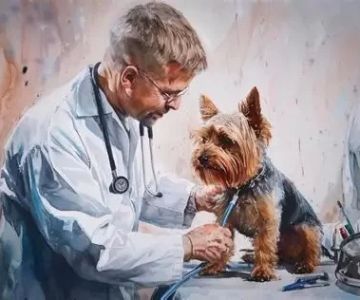- Understanding Fleas and Their Impact on Cats
- Common Signs of Fleas on Cats
- Detailed Observation and Detection Techniques
- Real-Life Case of Flea Infestation and Treatment
- Professional Guidance from Hidden Brook Veterinary
1. Understanding Fleas and Their Impact on Cats
Fleas are one of the most common external parasites that affect cats worldwide. These tiny, wingless insects feed on your cat’s blood, causing itching, irritation, and potential health problems if left untreated. Beyond mere discomfort, fleas can transmit diseases and lead to secondary infections through excessive scratching.
Recognizing the signs of fleas on cats early is crucial to preventing a full-blown infestation and ensuring your feline companion’s comfort and health. Fleas reproduce rapidly, so even a few fleas can quickly multiply into a serious problem.
1.1 Why Fleas Are a Concern
Fleas can cause allergic reactions known as flea allergy dermatitis, leading to severe itching and skin damage. Additionally, heavy infestations may result in anemia, especially in kittens or older cats. Fleas can also carry tapeworm larvae, posing further health risks to your pet.
1.2 Fleas and the Home Environment
Fleas don’t just stay on your cat; they often infest your home environment, including carpets, bedding, and furniture. This cycle makes treatment more challenging and underscores the importance of early detection and comprehensive control measures.
2. Common Signs of Fleas on Cats
Spotting fleas can be tricky because of their small size and quick movements. However, there are several telltale signs that indicate your cat might be dealing with fleas:
2.1 Excessive Scratching and Grooming
One of the earliest signs is increased scratching, licking, or biting of the fur. Cats try to soothe the irritation caused by flea bites, often focusing on the neck, base of the tail, and belly.
2.2 Visible Fleas and Flea Dirt
Fleas themselves appear as small, dark, fast-moving insects. More commonly, you may notice “flea dirt,” which looks like tiny black specks on your cat’s skin or fur. This flea dirt is actually flea feces made up of digested blood and can be tested by placing it on wet tissue—if it turns reddish, it confirms flea presence.
2.3 Hair Loss and Skin Irritation
Continuous scratching may lead to bald patches, redness, scabs, or inflammation. Some cats develop a condition called miliary dermatitis, characterized by small crusty bumps due to flea allergy.
2.4 Behavioral Changes
Your cat might appear restless, irritable, or unusually withdrawn due to discomfort. Changes in sleeping or eating habits can also hint at a flea problem.
3. Detailed Observation and Detection Techniques
Beyond visual signs, there are practical ways to check your cat for fleas:
3.1 Using a Flea Comb
A flea comb with fine teeth is an effective tool to catch fleas and flea dirt. Comb through your cat’s fur, especially around the neck and tail base, then inspect the comb for any caught fleas or black specks.
3.2 Bathing and Inspection
Occasionally, a gentle bath can help reveal fleas by flushing them out or making flea dirt more visible. Always use cat-safe shampoos recommended by veterinarians.
3.3 Environmental Inspection
Check your cat’s bedding and favorite resting spots for fleas or flea dirt, as this can indicate a larger infestation requiring treatment beyond just your pet.
4. Real-Life Case of Flea Infestation and Treatment
Consider the story of Bella, a playful domestic shorthair who started scratching excessively one spring. Her owner initially thought it was dry skin but soon noticed tiny black specks and restless behavior. After visiting Hidden Brook Veterinary, Bella was diagnosed with a moderate flea infestation.
The veterinary team designed a comprehensive treatment plan including topical flea medication, environmental cleaning, and follow-up visits. Bella’s symptoms improved quickly, and her coat regained its shine within weeks. This case highlights the importance of early detection and professional intervention in handling fleas.
4.1 What Bella’s Case Teaches Us
Early recognition of signs and prompt treatment not only relieve your cat’s discomfort but also prevent infestation spread. Professional advice ensures safe and effective flea control tailored to your cat’s health.
5. Professional Guidance from Hidden Brook Veterinary
Hidden Brook Veterinary recommends a proactive approach to flea prevention and management. Their experts can help you identify early signs of fleas on cats and develop a customized prevention plan that includes safe products, environmental control, and regular health checks.
For peace of mind and the best care for your feline friend, consult Hidden Brook Veterinary for trusted recommendations and high-quality flea treatment products designed to keep your cat comfortable and flea-free.












